If you’re someone who is always trying to swim faster or further then chances are you’ve probably read countless articles on lactic acid, muscle soreness and how to increase your aerobic threshold. Regardless, we wanted to share with you some interesting developments from the scientific world which may help you improve your swimming.
For those who don’t know, your aerobic threshold is the point at which your body begins to use aerobic metabolism to feed energy to your muscles. The aerobic respiration process is what leads to lactic acid build up in your muscles, leading to the sore feeling commonly associated with intense bouts of cardiovascular training. At least that was what scientists believed. However, new evidence suggests that the Ph level of our blood is too high for lactic acid to build up.
Instead of the lactic acid building up in our muscles during the anaerobic metabolism process, lactic acid actually splits into a hydrogen ion and lactate. When you swim, your body relies on fast-twitch muscle fibres which aren’t able to use oxygen as effectively and so your body switches to anaerobic respiration through which glucose is broken down into lactate and hydrogen.
What is muscle soreness caused by?
Essentially, there are two types of muscle soreness you may experience after a swim, the first being delayed onset muscle soreness, or DOMS for short. This soreness usually occurs a day or two after intense exercise and is caused by micro-tears in muscle fibres along with inflammation. The second is the soreness experienced during exercise, which is caused by the acidic build-up of the hydrogen ions, not the lactate.
How can I decrease muscle soreness?
Your body needs lactate. It fuels some of the key organs in your body such as your brain, liver and muscles. However, if your aerobic threshold is low your body struggles to process lactate as fast, which instead means that lactate and hydrogen ion build up in your bloodstream instead, leading to soreness.
Muscle soreness during exercise can therefore be increasing your metabolism through regular intense exercise. Additionally, having a healthy liver and kidney is important so reductions in alcohol or other food and drink with high levels of toxins can help you process lactate more effectively. Essentially, it’s no secret that maintaining general levels of health both through diet and exercise will allow you to swim more effectively.
Therefore, whether you want to come along to one of our coaching sessions, or you just want to try wild swimming by yourself (as long as it’s safe to do so (Having a swimming buddy is advised)) there’s never a better time than now to start improving your health.
Reference source

Recent Comments